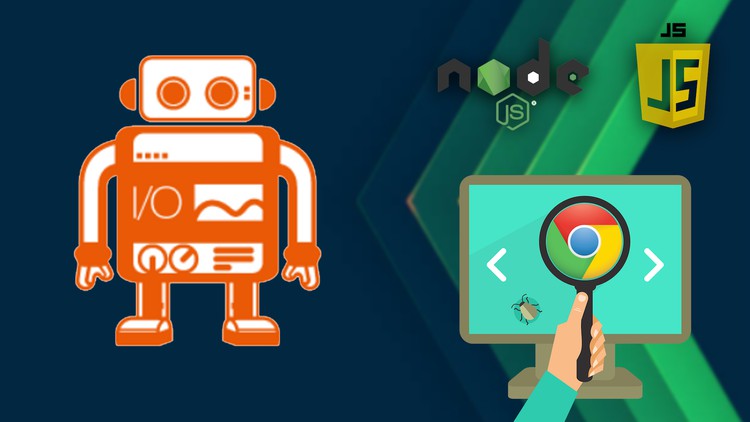
The Complete WebdriverIO Course: Learn Automated Testing with Node.js, Mocha and Selenium Webdriver
What you will learn
Understand the fundamentals of the WebDriverIO automation framework
Learn the basics of Node .js and JavaScript
Create test suites with the WebDriverIO framework
Set up the WebDriverIO configuration file
Create and run automated tests with the WebDriverIO framework
Learn about the various WebDriverIO commands and their syntax
Work with page objects and page object models
Learn how to access HTML elements on the page
Understand how to use WebDriverIO’s selector strategies
Perform data-driven testing with WebDriverIO
Learn how to test different browsers with WebDriverIO
Asserting test results using assertions
Learn about the various types of waits available in WebDriverIO
Set up a continuous integration server with WebDriverIO
Understand how to debug tests with the WebDriverIO framework
Learn how to use the built-in reporter
Learn how to use the command-line interface
Understand how to use the browser object
Learn how to use the WebDriverIO client
Learn how to use the WebDriverIO services
Description
This course is designed to help you master with WebdriverIO, the popular automation test framework for web applications. You will learn the basics of the framework, including how to install it, write and run tests, and debug your scripts. You will also learn the fundamentals of automation testing, such as element selection, test organization, and assertion types. Additionally, you will gain an understanding of the best practices and guidelines to follow while writing tests. By the end of the course, you will have the skills to write effective tests and confidently work with WebdriverIO.
This WebdriverIO Course is designed to take your WebdriverIO skills to the next level. It will cover advanced topics such as setting up a custom test framework, debugging, performance testing, and more. You will learn how to use the most up-to-date tools and techniques to write more effective and efficient automated tests. The course will also focus on best practices for writing maintainable and reliable code. After the course, you will have the knowledge and skills to confidently create and maintain complex automated tests.
Some of the companies that are using WebdriverIO include Microsoft, Walmart, AT&T, Adobe, Oracle, HP, and IBM.
Why should you learn WebdriverIO?
WebdriverIO is a powerful test automation framework for Node.js. It provides a simple and easy to use API for writing automated tests for web applications. WebdriverIO makes it easy to run tests in parallel, which helps to drastically speed up the process of running a regression suite. It also has an extensive library of tools and features that make writing automated tests a breeze. WebdriverIO also allows for integration with a variety of other testing frameworks and tools, making it a great choice for a wide range of testing needs.
This course will teach how to use WebdriverIO main components from scratch.
- Test Runner: This component is responsible for running the tests. It provides the ability to execute tests in parallel, execute tests in different browsers, as well as many other features.
- Assertion Library: This component is responsible for writing the assertions in the tests. By default, it uses the Chai assertion library, but can be configured to use any assertion library.
- Command Line Interface (CLI): This component provides an easy way to execute tests from the command line. It also provides a way to configure the test runner, so you can set up the environment for your tests.
- Browser Drivers: This component is responsible for communicating with the browser. It provides the ability to navigate to a page, click on elements, and perform other actions in the browser.
- Test Reporter: This component is responsible for reporting the results of the tests. It can be configured to print the results to the console, or write the results to a file.
WebdriverIO includes the following sections:
- Setting up the Environment: This section covers the installation and configuration of WebdriverIO, as well as the setup of the necessary dependencies.
- Writing Your First Test: This section takes you through the process of writing your first test using WebdriverIO.
- Locating Elements: This section covers the various methods of locating elements on a web page so that you can interact with them.
- Working with the Browser: This section covers the API for controlling the browser, such as opening and closing windows and tabs, navigating, etc.
- Working with the DOM: This section covers the API for interacting with the DOM, such as retrieving text, attributes, etc.
- Debugging: This section covers techniques for debugging WebdriverIO scripts, such as using the built-in logging capabilities.
- Advanced Topics: This section covers more advanced topics, such as using custom commands, using the WDIO testrunner, etc.
Content